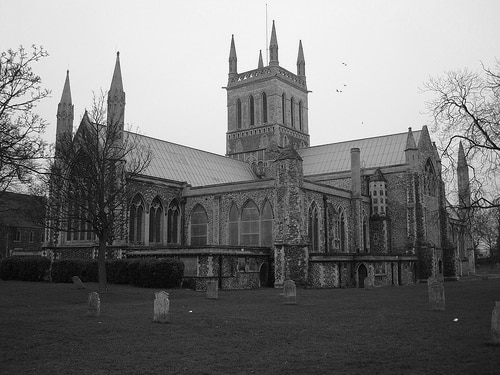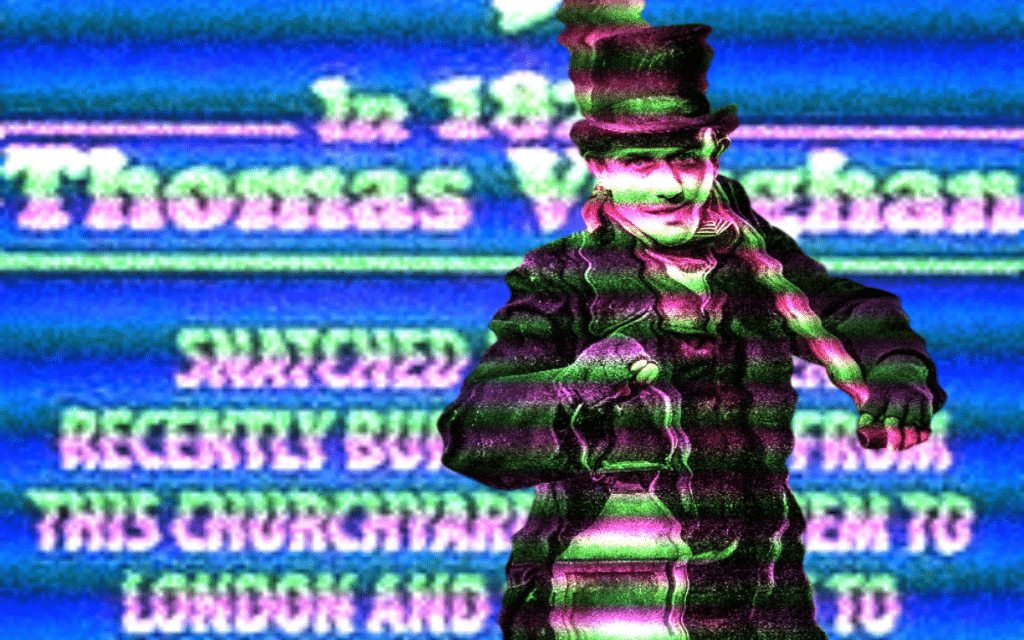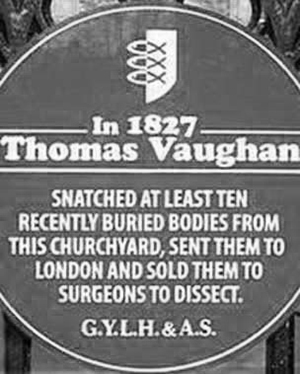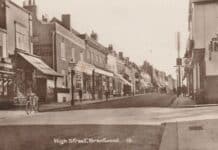JOSIE PALMER reveals Great Yarmouth in Norfolk has a dark history of body snatchers, the most famous being Thomas Vaughan

Bodysnatchers, or resurrectionists, were hired by surgeons to steal bodies from graveyards across the country, with fresh corpses and the bodies of children fetching the highest prices. The most famous case in Yarmouth was that of Thomas Vaughan alias Smith in 1827.
It was only the bodies of hanged criminals that were allowed to be used by surgeons and anatomists for dissection and research if the judge at their trial so directed. This was considered a particularly heavy sentence for, after the dissection, the unwanted remains would not be permitted burial in consecrated grounds.
This severe sentence was relatively rare and therefore there was a scarcity of bodies for surgeons and anatomists to study and dissect. Soon desperate surgeons and enterprising criminals started to come together to fill this gap in the market. Grave robbers opened fresh graves and stole the corpses and surgeons made little secret of the fact that they would pay good money for such corpses.
The Edinburgh surgeons are perhaps the most famous, or infamous, for this – due largely to the notorious Burke and Hare articles on Spooky Isles who moved from grave robbing to murder to keep the anatomists happy. But it happened all over the country, aided by the fact that to steal a corpse was not a felony, but rather a misdemeanour. Provided the robbers were careful not to remove any item of grave goods with the body the worst that could happen to them was a fine or a short prison sentence.

However, Sir Astley Cooper, surgeon to George IV, William IV and Queen Victoria was open about his use of corpses obtained from body snatchers and the practice helped him develop such procedures as the first tying of an abdominal aorta to cure aneurysm. Astley Cooper boasted ‘There is no person, whatever his position in life might be, whose body after death [I] could not obtain. The law only enhances the price and does not prevent exhumation.’
Thomas Vaughan gets a job
Sir Astley Cooper was the son of the vicar of Great Yarmouth. His need for corpses saw him employ Thomas Vaughan, a former stonemason, who rented a house on Row Six, Great Yarmouth, and stole ten bodies from St Nicholas’ churchyard over a period of nineteen days, including the body of an infant, a small child, a young woman and a 67-year-old man.
The corpses were packed in sawdust in crates labelled ‘Glass – Handle with care’ and taken by wagon to London where they were exhibited in an upstairs room of an inn outside the gates of St Bartholemew’s Hospital. Surgeons would call in and select the body of their choice, paying between 10 and 12 guineas for each one.
Vaughan was arrested and eventually sentenced to six months in prison – his grateful clients paid his legal fees and an allowance to his wife while he was in jail.
He maintained his criminal career by concealing the corpses in old houses on the row before packing them in crates of sawdust and sending them by wagon to London, via Norwich. A later bodysnatching incident, where Thomas Vaughan stole the clothes from a corpse, saw him arrested again and transported to Australia.
The actions of Yarmouth resurrectionists were reported by the Norfolk Chronicle Newspaper at the time causing ‘great excitement’ in the town, while the churchyard at St Nicholas was seen to resemble a ploughed field.

The general populace regarded this practice with fear and horror and all kinds of measures were tried to foil the robbers – watchmen in graveyards, metal cages over graves, iron coffins – but still this grisly trade continued. Eventually, largely due to the outcry over Burke and Hare, the Anatomy Act of 1832 was passed, allowing the use by anatomists of any unclaimed corpse and the worst of the body snatching ceased.
Discover more Haunted Places to Visit in Great Yarmouth







